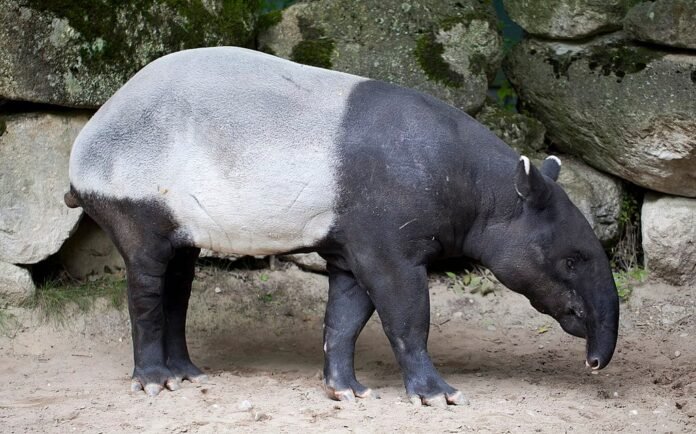
The tapir, the largest land mammal in South America, has been spotted in a forest in the Costa Verde region of Brazil, more than a 100 years after its last confirmed sighting in that region.
The last time a South American tapir was sighted in Brazil’s Atlantic Forest was in 1914 in the Serra dos Órgãos National Park in the state of Rio de Janeiro, Brazil. Since then, urbanization and hunting have pushed these animals out of their habitat and placed them on the endangered species list.
However, strategically placed cameras in Rio de Janeiro’s State Institute of Environment show that the animal has reappeared. The cameras captured 108 images and videos showing three tapirs, including a mother and her calf, wandering in the forest of Cunhambebe State Park.
Brazil’s Cunhambebe State Park provides a haven for endangered animals like the tapir
Brazil‘s Cunhambebe State Park opened in 2008. It comprises 38,000 hectares of lush flora and fauna and is one of the biggest safe havens for endangered species in the world.
The resurgence of South America’s biggest mammal is particularly celebrated by conservationists and scientists. Known as a ‘forest gardener’, the tapir is vital for the tropical forest’s ecosystem. Feeding on fruits, leaves, and plants, the mammals deposit seeds in different places through their feces, allowing new plants to grow.
With adult weights ranging from 150-320 kilograms, the South American tapir is the largest surviving native mammal on the continent. pic.twitter.com/Ocyw6PLL3F
— Taylor McCoy 🦖 (@TM9380) February 13, 2023
Tapirs also create natural trails through the forest undergrowth which allows sunlight to reach the forest floor. This additional contribution to the area’s ecosystem is another reason why the animals’ return is so important for conservation efforts.
The park hosts a variety of other endangered animal species, such as the Southern Muriqui, one of the largest primates in the Americas, listed as critically endangered. Another species residing in the park is the Black-fronted Piping Guan, a bird.
The return of South America’s largest Mammal confirms the importance of protected areas
A representative of Brazil’s State Institute for the Environment (INEA) said that the resurgence of the tapir “shows just how vital protected areas and dedicated conservation efforts are for the revival of iconic species.”
Cunhambebe State Park confirmed in a recent Instagram post that it “acts as a haven for species at risk, ensuring the preservation of key ecological processes like seed dispersal, population balance, and genetic diversity.”
Baird’s Tapir, Tapirus bairdii, is a species of mammal found in the forests and grasslands of Central and South America. it is considered the largest land mammal indigenous to these regions and closely related to primitive horses and rhinoceroses
pic.twitter.com/qisDlEqJEr
— Science girl (@gunsnrosesgirl3) January 5, 2025
Further conservation efforts are expected to ensure that tapirs continue to thrive in both the park and the larger ecosystem so that they can keep sustaining other key endangered species.
